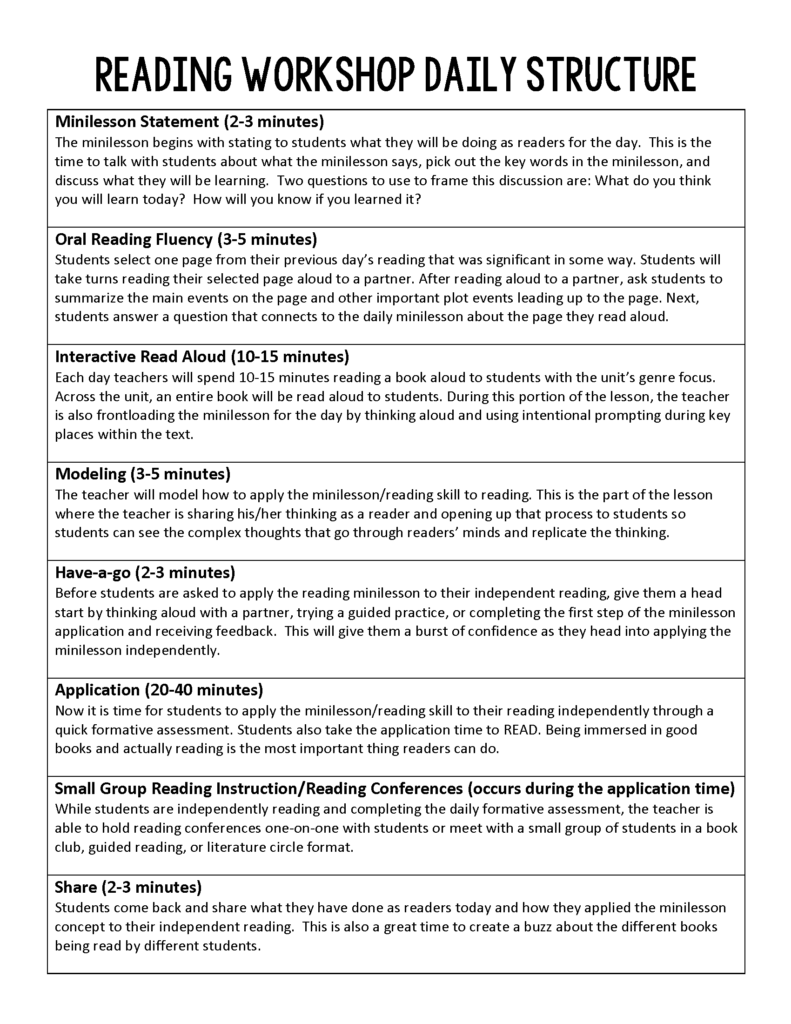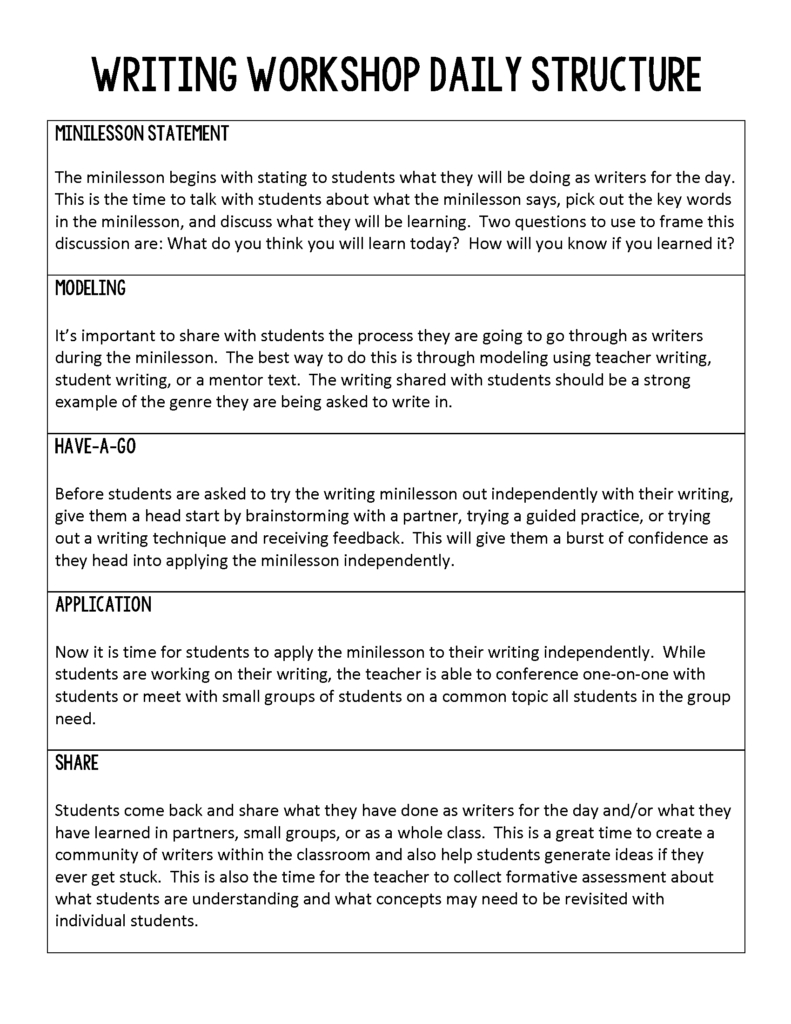It’s easily the number one question I get asked by middle school ELA teachers who want to use a Reading Workshop/Writing Workshop framework, but have a less than desirable amount of time to teach students. “I want to use a workshop format, but I only have 45 minutes to teach. How do I fit it all in?”
Middle School ELA teachers are tasked with teaching students reading, writing, and grammar/vocabulary. Some teachers have a significant amount of time in their literacy block to accomplish this, others have two smaller blocks of time with reading and writing separated out, and still there are others who are given one measly chunk of time and are expected to pretty much work a miracle.
For the record, I am a firm believer that middle school ELA teachers should have 80 or more minutes of cumulative time EVERY school day with their students in order to do justice in teaching reading, writing, and grammar/vocabulary. Since that is not reality, however, I decided to write this blog post to give ideas for how you can still have a successful literacy block with a limited amount of instructional time.
Here is an example of a Reading Workshop framework for middle school students. If you’d like to see a daily structure written out for the exact amount of time you have in your literacy block, visit this FAQ document and refer to question 2.

Here is an example of a Writing Workshop daily structure for middle school students:

So what do you do if you want to use a workshop model for reading or writing like the daily workshops pictured above, but you’re lacking the time? Let me offer you some practical, no-nonsense ideas to still make it happen.
Alternate between reading units and writing units. I will never forget the days when I attempted to do Reading Workshop and Writing Workshop every single day. Granted, I had an 80-minute literacy block, but even then, it felt so rushed. I felt like my entire class period was transitions and pushing students onto the next thing. Time for students to actually read and write took a backseat. It just didn’t feel good. When I decided to alternate reading units and writing units, it was liberating. I was able to start a unit with a clear goal in mind and get to focus each class period on one of the frameworks instead of trying to speed race through both.
A few words of caution though when you go to alternating reading units and writing units. You need to make sure you have a clear unit plan and timeline for your units in place BEFORE you start a unit. As a general rule of thumb, I plan my reading units to last between 4-5 weeks, and my writing units to last between 3-4 weeks. If you don’t set a clear starting and stopping point, it is easy to let units drag on and on, and before you know it, students have gone 7-8 weeks without reading because the writing unit lasted forever.
Focusing on one area at a time is the quickest and easiest way to give yourself more time and freedom during ELA.
Have a consistent framework for Reading Workshop and Writing Workshop. Know the different pieces that you will do with students daily and simply change out the content. This consistency will do wonders for your precious instructional minutes. Students know what to expect when there is a common class structure that is followed daily. This makes transitions more efficient and cuts down on time you have to spend explaining logistics to students.
A consistent framework also helps you as a teacher budget the time you have accordingly. If you use the same framework and know about how much time you can allot to certain pieces, you will feel when a certain piece “goes long” and know to adjust another piece to make up for it.
When you format your class differently every day, it’s always new. When something is new to students and the teacher, it always takes longer. That’s just the way it is. Using a consistent framework (like the frameworks for Reading Workshop and Writing Workshop pictured above) is a total game changer.
Identify your “Time Suckers.” It is often not the entire Reading Workshop or Writing Workshop daily framework that is taking too much time, but one piece within the framework. That piece is probably different for everyone and is usually our favorite part. Not saying this is you, but I can get extremely long-winded when I am teaching something that I am passionate about.
For many teachers, the part that takes WAY too much time in the Reading Workshop daily framework is the Interactive Read Aloud. A few quick fixes if this is you would be:
-Examine the texts/books you select for interactive read aloud. Short stories and picture books are great for interactive read aloud, especially for nonfiction reading units. If you are using a novel, which I highly recommend doing for fiction-based units, consider its length. How many days are in your reading unit? How many pages does that mean you would have to read to your students daily? How long does it take you to read that amount of pages? Time yourself beforehand, so it’s not a big surprise to you that it takes 30 minutes to read the amount of pages you need to read in order to finish the book by the end of the unit.
-Read a portion of the read aloud to students in class and record a portion of the read aloud for students to watch as homework. This isn’t ideal, but this does make using an IRA possible with minimal instructional minutes.
-If you’re alternating instruction between reading units and writing units, steal 10 minutes a day during the writing unit that comes before the next reading unit to get a jump start on the IRA. This idea would also work if there is any other common time you have with students aside from ELA where you could squeeze in a little reading time (homeroom, study hall, etc.).
-Stick with 2-3 stopping points. I know you love the book you’re reading aloud to students, and you want to make sure they’re getting it and picking up on all the little nuances the author incorporated, but this sucks up SO MUCH TIME if you’re stopping every couple of sentences. It’s also the equivalent to watching a movie with someone who comments on every little thing. While your interactive read aloud should be interactive, it still needs to be focused on students hearing a text read aloud.
In this example, I used the “time sucker” of interactive read aloud, but your time sucker may be different. Identify what it is and think of ways to reduce it.
Think systematically. Students’ reading and writing skills and knowledge are not defined by only this school year. They had a teacher last year, and they’ll have another teacher next school year (in some cases, maybe that’s you if you teach multiple grade levels). Either way, have confidence in what came before you and what will come after you. Know that students received core instruction before you and will continue to receive core instruction after you.
It is not your responsibility to teach everything. If you teach #allthethings, you will have no choice but to teach them in a shallow, Sparknotes-like manner. If you concentrate on your curriculum and the scope and sequence of reading and writing skills you plan to teach students through reading units and writing units for this school year, you will be able to bring the depth students need to experience rich learning. When you go down the rabbit hole and are reactive to everything you notice one student or a group of students doesn’t know, you will never be able to have the time you need to provide the teaching you have planned.
Advocate for a scope and sequence of reading and writing units at your school across the middle school grade levels. Utilize interventions and small group instruction for students who need major gaps filled. Trust in the teacher that comes before you and the teacher that comes after you to release yourself of the burden of feeling like you need to teach it all.
Time yourself. Don’t hate me when I give this piece of advice. I know how painful it is to take out the timer and find out that my transitions between different pieces of the framework are taking five minutes. It sucks to realize that because it hurt my teacher ego. But here’s the thing, if you’re truly here reading this blog post and trying to figure out how you can use a Reading Workshop or a Writing Workshop daily framework then you’re willing to be a problem solver.
In order to be a problem solver, you have to know what the problem is. You have to know what is taking up more time than you have allotted for it to take and think of ways to reduce the time or take away time from something else. My advice would be to print out the framework that you use and decide how much time each piece of the framework should take. Then time yourself (including the transitions between one piece and another) to figure out how you’re doing.
If you know that reading units and writing units using a Reading Workshop framework and Writing Workshop framework are the direction you want to head, don’t let time stop you. Use any of the tips and tricks mentioned above, or a combination of a few, to make it happen.
~Kasey





